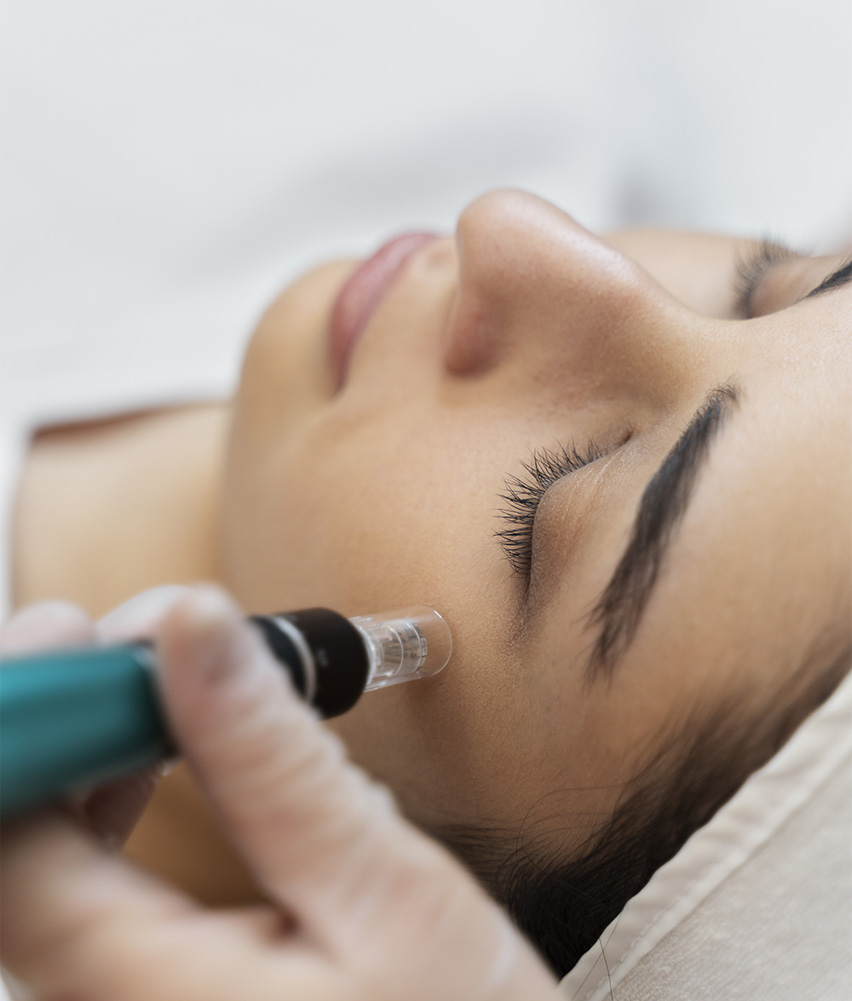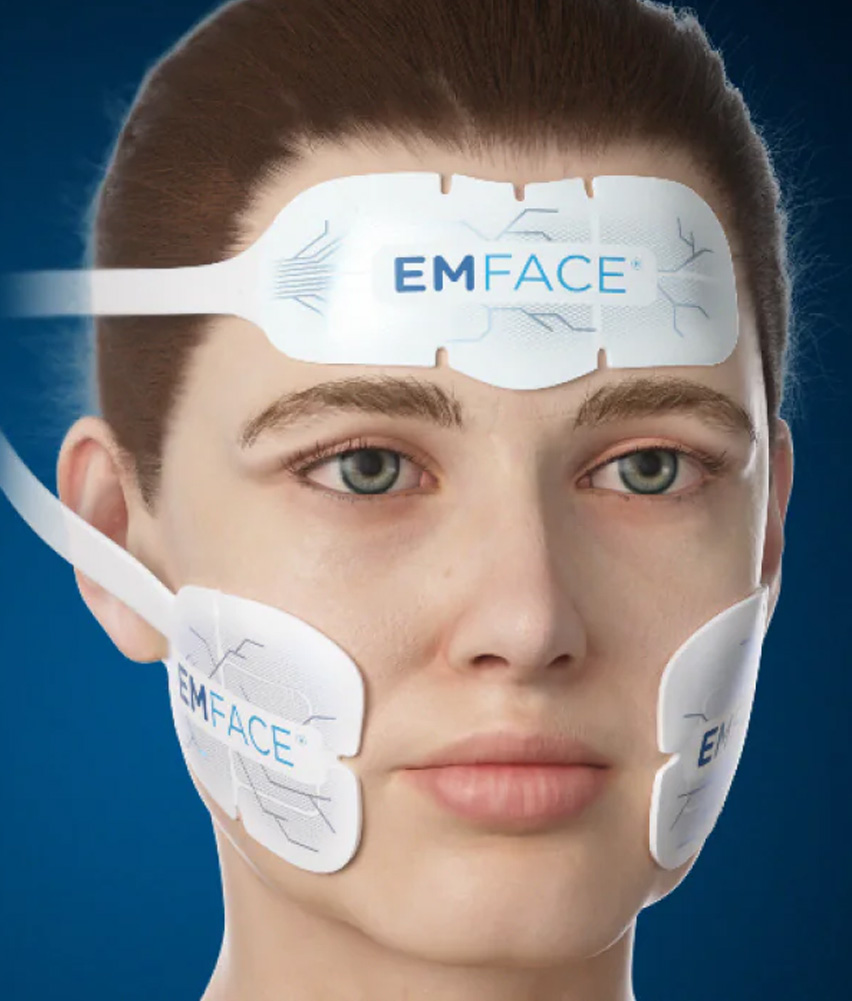
Dermal fillers are an amazing way to give shape and definition to the jawline. While in younger patients, it can enhance the jawline; in older patients, it provides structure to the vanishing jawline. To achieve a defined jawline and a stronger profile, dermal filler treatment is most often combined with anti-wrinkle injections and fillers in the chin.
Jawline Dermal Fillers Treatment
Correct placement in this area can go a long way in giving a sharper and elongated look to the face, restoring the "inverted triangle of beauty" to some extent. When you wonder how square-looking and aging faces of your favorite celebrities suddenly start looking more oval and feminine, think of ‘jaw fillers,' and everything starts to make sense!
Adding fillers along the jawline can also help camouflage the jowls, making the double chin look far less prominent, the neck more defined and can even make one look slimmer. However, it takes an experienced injector like Dr K M Kapoor, who with his keen aesthetic sense helps you achieve all this while maintaining an ‘untouched' look that looks entirely natural.
FAQ'S
Q: Who is the right candidate for dermal fillers in the jawline?
A: If you are bothered by the weak appearance of your jawline, or if you’ve begun to notice signs of aging in the lower part of the face, you could be a candidate for dermal fillers. You must, however, be an adult before considering cosmetic enhancement with dermal fillers at Anticlock Medispa.
Candidates in the younger age group (less than 35 years) would be:
-
Men and women who have a naturally weak or under formed jawline, accompanied with or without a receding chin. This is usually genetic and can lead to a decrease in the person’s overall confidence. In just about 30 minutes, dermal fillers can help correct this weakness of the jawline and restore a sense of balance & proportion to the face.
-
Women who have a broader and more masculine jaw and want to achieve a more feminine and softer look.
-
Men who have an oval face with a less prominent jawline and who want a more angular and chiseled look.
In the older age group (more than 35 years), the reasons to opt for jaw enhancement with fillers would be related to the signs of aging:
-
The appearance of jowls and a wavy jawline.
-
Loss of the transition zone between the chin and the neck
-
Reversal of the ‘inverted triangle of beauty.'
Generally, in a youthful face, the face is broadest at the cheeks and becomes narrow at the chin giving the face an "inverted triangle" look, and this is what contributes to the attractiveness of the face as a whole. A well-defined jawline is a crucial aspect that adds to the natural beauty.
This well-defined jawline in youth, however, slowly changes with age. In our forties, the cheeks lose volume, the lower-face starts to sag, the jaw loses its definition, the chin begins to recede, the neck becomes loose, and "jowls" start appearing giving the face haggard and tired appearance. The jaw bone appears weaker because of a natural loss of bone mass and muscle bulk. The decline in mineral density of jaw-bone begins to show even earlier in Asian women, sometimes as early as 35 years. All these changes lead to a loss of this "inverted triangle."
Women usually circumvent this problem by using contouring makeup techniques to create a shadow zone under the jaw bone to make it look more prominent. But it is impossible to wear makeup all the time and can prove to be a more expensive solution in the long run. Men, on the other hand, start hiding their ill-defined jaws behind their beard.
Not all people are proficient at contouring, and not all men fancy a beard. For such people, dermal fillers are a good alternative, to add to the structural support of the face, thus sharpening the jawline and camouflaging the jowls.
Q: How do dermal fillers actually sculpt the jawline?
A: The hyaluronic acid in the filler is formulated in the form of a viscous gel matrix. When it is placed over the bone, it provides a scaffolding to support the loose skin by acting like a plumping cushion. Hyaluronic acid is a ‘water-loving molecule' and can bind to 100 times its weight of water. Thus, when injected in the jawline, it provides a structural firming by staying in place and adding to the hydration of the area, lifting the skin and improving its texture and tone in that area.
Creating a defined jawline establishes a distinction between the neck and the chin, and this creates a shadow zone under the Jaw. This creates an illusion of a slimmer jaw, a lifted neck and camouflages the jowls by creating structural support around it.
Q: How can jawline fillers make me look slimmer? How do they make the double chin less prominent?
A: Our clients often ask us how adding something to the jawline can actually give a slimmer look to the face. Although it does seem counter-intuitive, dermal fillers along the jawline do provide the illusion of being slimmer by increasing its structural definition. Having a clearly defined 90-degree angle from the bottom of the ear to the chin makes the chin look more pronounced, giving the face a more sculpted and angular look. It doesn’t actually make the fat disappear, but it does make the neck look distinct from the jaw by creating a shadow zone under the chin and thus, make it look slimmer.
Q: How painful is the jawline fillers treatment?
A: Before the procedure begins, a numbing cream is applied in the treatment area to make you comfortable during the procedure. The HA-based Dermal fillers also mostly contain a local anesthetic agent and ensure that you don't experience any pain. However, you might feel a little tugging and pulling, especially when we insert a cannula, and this is entirely normal. Most patients tolerate it pretty well.
Q: What happens during the treatment?
A: The procedure starts after the topical numbing cream has taken effect, and this takes 15-20 minutes. You would be given a stress ball to squeeze during the treatment, and most people find it helpful to relax during the procedure. Dr. K M Kapoor will then use a combination of a very fine needle and cannula to deliver the product along the jawline. This takes about 10 minutes, and the filler is then molded in place by applying gentle pressure to ensure a soft and natural result.
Q: Why is a cannula used for dermal fillers in the jaw?
A: Very few aesthetic medicine practitioners use cannulas in their practice. This is because of two reasons – one, using a cannula adds to the cost and two, most practitioners who don’t have enough experience in injectables find it out of their comfort zone.
Dr. K M Kapoor is a big advocate of using cannulas in the jawline as well as for tear-trough treatment and cheek fillers. A cannula looks like a long needle but does not have a sharp tip like a needle. It instead has a blunt rounded tip and is actually a hollow tube which is threaded into the injection site and slid along the natural tissue planes. It has many advantages:
-
With just one small puncture on the skin, it provides access to a large area for filler placement along the jaw.
-
Since it is blunt tipped, it decreases the risk of injuring any blood vessels and thus reduces the chances of bruising and other vascular complications.
-
With a cannula, you can place the filler along the jawline with more precision, and the results achieved are more even.
Q: Are there any side effects of jawline filler treatment?
A: Although there are minimal risks in experienced hands, minor bruising, and redness are common side effects which disappear in a few days.
The rare side effects would include infection at the site, nodules, granulomas and if the filler gets deposited into an artery, it could even lead to tissue necrosis and in extremely rare cases impairment of vision.
That is why fillers treatment should be done only by a highly experienced injector who knows the anatomy well and is well versed in the cannula technique. Avoiding the danger zones and depositing the fillers in the right planes can help avert potentially disastrous complications.
Q: What happens after the jawline dermal filler treatment? Do I have to take any precautions?
A: There is hardly any downtime associated with the treatment, and you can go back to your regular routine right after the treatment. Slight swelling and temporary redness are expected, and sometimes there could be bruising too. This can be decreased by icing the area. You should also avoid alcohol, any heat therapy (steam, sauna), or vigorous exercise for 24 hours as these might increase the risk of late bruising. We also recommend not applying any cosmetics in the treated area until after 24 hours.
If everything goes as per plan, you would be called for a follow-up appointment.
Q: When will I see the results of dermal fillers for the jawline? How long do they last?
A: The results can be seen immediately post procedure, but the area might feel firmer initially. Over the next 15 days, as the filler becomes integrated with the body tissues, the chiseled jawline begins to look natural and softer.
The results of a jawline filler treatment last anywhere between 18 to 24 months. But results vary according to the individual response as well. The fillers tend to wear off earlier in smokers and those who undergo excessive sun exposure.
Q: What type of dermal filler is recommended in the jawline? How much filler is generally required to sculpt a jawline?
A: For the jawline enhancement at Anticlock Medispa, we prefer a high-density filler which gives a firming effect to the bone. A filler like Juvéderm's ‘Voluma,' would be ideally suited for this area. The quantity required would depend on the amount of sagging and loss of definition, your goals and expectations from the treatment. Generally, our patients require anywhere between 2-5 ml of filler in this area.
Q: How can other treatments help in getting a sculpted jawline?
A: Many factors are contributing to an ill-defined or wavy jawline which includes: Loss of mineral density in the jaw bone, sagging skin, excessive fat accumulation under the chin and development of platysmal neck bands which create what we call a ‘bulldog appearance' around the corners of the mouth. Charting out the most optimal treatment plan, therefore, depends on a proper assessment by your clinician.
While the jaw bone can be enhanced with filler treatment, the skin can be tightened and lifted by using non-invasive treatments like Ultherapy. The excessive fat, on the other hand, can be tackled with fat dissolving injections or a completely non-invasive procedure like Coolsculpting. The platysmal bands on the neck can be easily treated with anti-wrinkle injections on the neck.
Most people benefit from Dermal fillers alone, but few need a combination of two or more these treatments to bring about a well sculpted jawline.



